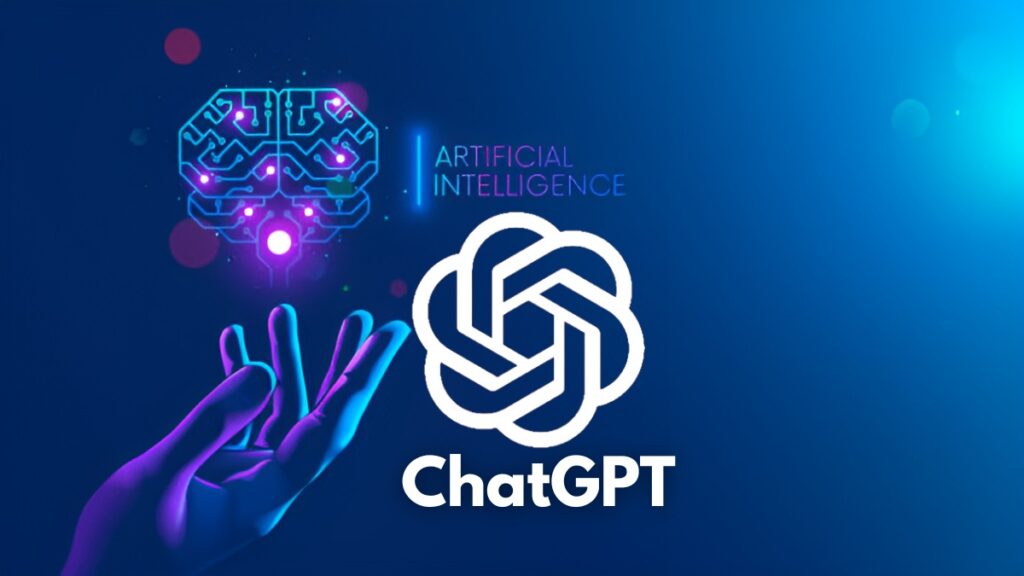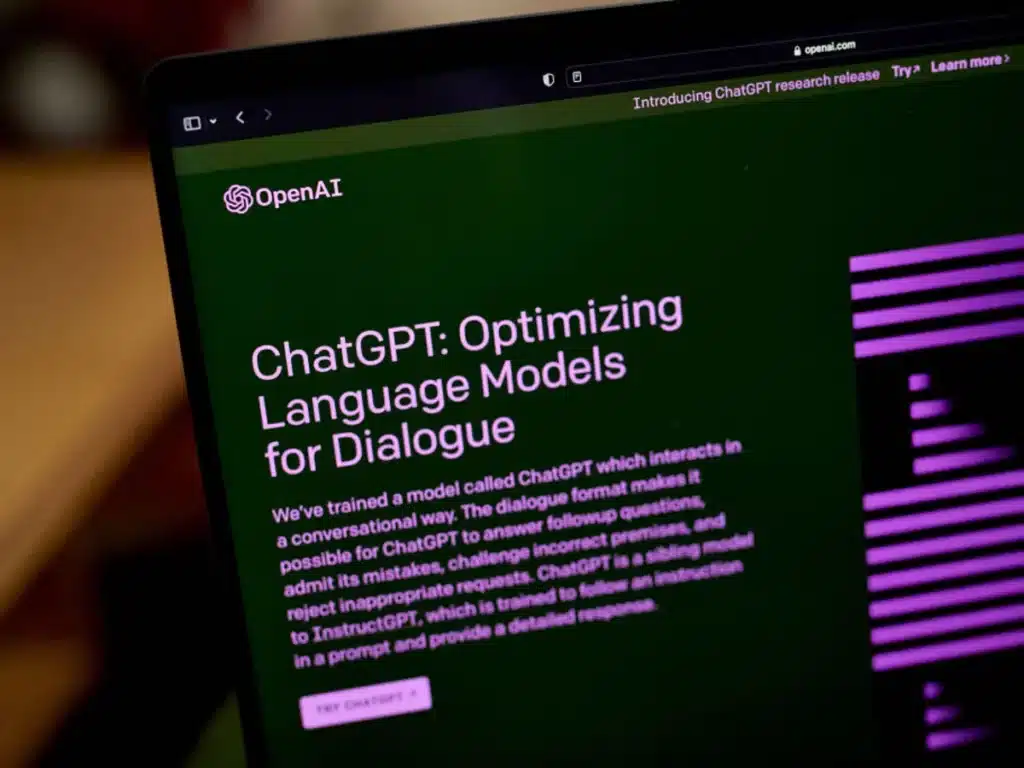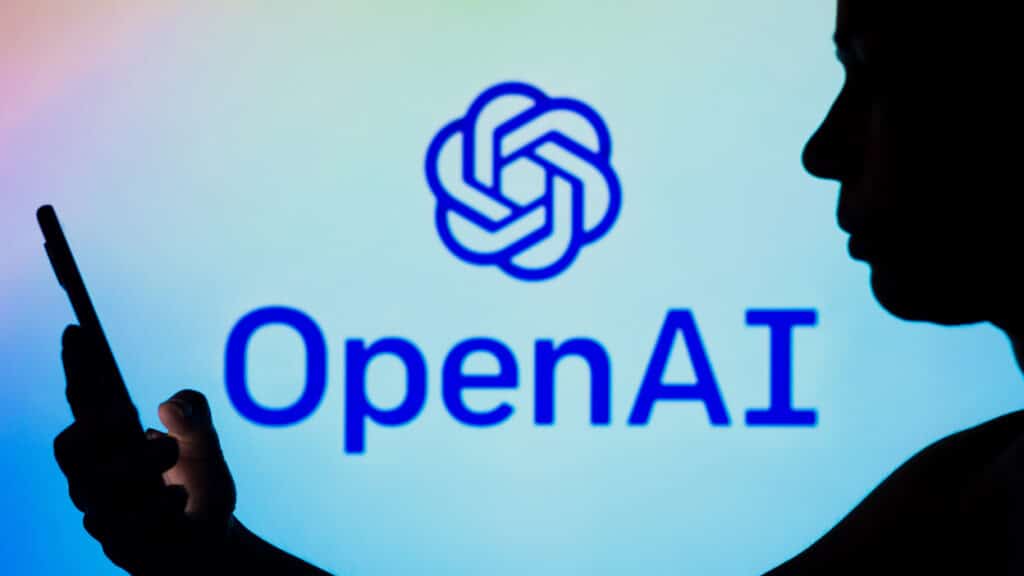Welcome to the future of artificial intelligence! In this article, we delve into the fascinating world of ChatGPT, an advanced language model developed by OpenAI. ChatGPT, powered by the state-of-the-art GPT-3.5 architecture, has revolutionized the way we interact with AI.
With its remarkable ability to understand and generate human-like text, ChatGPT has become a versatile tool for various applications, from assisting in writing tasks to answering complex questions and engaging in conversations.

In this article, we explore the capabilities and limitations of ChatGPT, its impact on various industries, and the potential it holds for shaping the future of AI-powered communication
. Join us as we dive into the intricacies of ChatGPT and discover its immense possibilities in enhancing human-machine interactions.
Read Also: Common Computer Issues and How to Fix Them
What is Chat GPT?
ChatGPT is an advanced language model developed by OpenAI, specifically designed for generating human-like text responses in conversational contexts. It is built on the GPT (Generative Pre-trained Transformer) architecture, which has been trained on vast amounts of text data to learn the patterns and structures of human language.
ChatGPT can understand and generate text based on the input it receives, allowing users to engage in natural language conversations with the model. By leveraging its extensive training, ChatGPT can provide relevant and coherent responses to prompts, making it a valuable tool for various applications.

It can be used to answer questions, provide recommendations, generate creative content, assist in writing tasks, and much more. The model has been fine-tuned to ensure its responses are informative, contextually appropriate, and aligned with user input.
ChatGPT’s ability to simulate human-like conversation has opened up new possibilities for interactive and dynamic interactions between humans and AI. It represents a significant step forward in natural language processing and AI communication, bridging the gap between humans and machines.
However, it’s important to note that ChatGPT has limitations, and its responses may sometimes lack accuracy, exhibit biases, or produce unrealistic outputs.
Overall, ChatGPT serves as a powerful tool for enhancing human-machine interactions, facilitating easier communication, and providing valuable assistance in various domains. Its continuous development and refinement hold promise for further advancements in the field of natural language understanding and conversation AI.
READ ALSO: Tech: The New In Thing
OpenAI
OpenAI is an artificial intelligence research laboratory and company that focuses on developing and promoting AI technologies. It was founded in December 2015 and has since gained recognition for its contributions to the field of artificial intelligence, particularly in the areas of natural language processing and machine learning.
OpenAI is known for developing advanced language models, including the GPT (Generative Pre-trained Transformer) series. These models, such as GPT-3, are designed to understand and generate human-like text based on the input they receive.
OpenAI’s models have been used in various applications, ranging from language translation and content generation to chatbots and virtual assistants. In addition to research and development, OpenAI also emphasizes ethical considerations in AI development and deployment.

They strive to ensure that AI technologies are used responsibly and to mitigate potential risks associated with their applications. OpenAI promotes transparency, fairness, and accountability in AI systems and actively works to address biases and limitations in AI models.
OpenAI has made significant advancements in AI research and has collaborated with various organizations and researchers to advance the field. They have also made some of their models, including GPT-3, available for public use through API access, allowing developers and businesses to integrate the power of OpenAI’s models into their applications.
Overall, OpenAI plays a crucial role in driving the development of AI technologies, promoting responsible AI practices, and pushing the boundaries of what AI systems can achieve in natural language understanding and generation.
SEE: Apple Vs Android: The Tech Mobile Showdown
Chat GPT Login with OpenAI
To access Chat GPT through OpenAI, you will need to follow these general steps to create an account and obtain the necessary credentials:
- Visit the OpenAI website: Go to the official OpenAI website at openai.com.
- Sign up or log in: If you don’t have an account, click on the “Sign up” or “Get started” button to create a new account. If you already have an account, click on the “Log in” option.
- Choose a plan: OpenAI offers different plans for accessing their models, including free trial options and paid subscriptions. Select the plan that suits your needs and budget.
- Provide the required information: Fill out the registration form with your details, including your name, email address, and any other information requested by OpenAI.
- Agree to the terms of service: Read and accept the terms of service and any other agreements or policies that OpenAI requires.
- Obtain API keys or access credentials: After completing the registration process, OpenAI will provide you with API keys or access credentials that you can use to authenticate and access the Chat GPT service.
- Follow the documentation: OpenAI provides comprehensive documentation and guides on integrating and using their models, including Chat GPT. Refer to the documentation for instructions on using the API and making requests to the Chat GPT service.
It’s important to note that the exact process may vary depending on OpenAI’s current policies and procedures. It’s recommended to visit the OpenAI website or contact their support for the most up-to-date and accurate information on creating an account, logging in, and accessing Chat GPT.
READ ALSO: How To Be a Tech Bro
How to Use Chatgpt
To make the most of ChatGPT and use it to its full effect, consider the following tips:
- Clearly define your objective: Before starting a conversation with ChatGPT, clearly understand what you want to achieve. Clearly define your objective or the problem you need help with.
- Provide detailed instructions: When interacting with ChatGPT, provide clear and specific instructions. The more detailed your instructions, the better the model can understand and generate relevant responses.
- Use system messages: You can use system messages to gently guide the behaviour of ChatGPT. By using a system message at the beginning of the conversation, you can provide context or set the tone for the conversation.
- Experiment with temperature and max tokens: Temperature and max tokens are parameters that control the randomness and length of the model’s responses. Adjusting these parameters can help you fine-tune the output to match your preferences.
- Iterate and refine: ChatGPT is a language model continuously learning and improving over time. If you’re unsatisfied with the initial responses, consider iterating and refining your instructions or experimenting with different approaches until you get the desired outcome.
- Be mindful of biases: While ChatGPT aims to provide helpful and relevant responses, it may inadvertently exhibit biases present in the training data. It’s important to be mindful of this and critically evaluate the responses generated by the model.
- Read the documentation: OpenAI provides documentation and guidelines on using ChatGPT effectively. Familiarize yourself with the documentation to understand the capabilities and limitations of the model, as well as any specific guidelines or best practices recommended by OpenAI.
Remember that ChatGPT is a powerful tool, but it is not perfect. It’s important to use it responsibly, critically evaluate its responses, and consider it as a tool to assist and augment human intelligence rather than a substitute for human judgment.
SEE: Google Translate: All you Need to Know
Functions of ChatGPT
ChatGPT serves as a conversational AI model with various functions. Some key functions of ChatGPT include:
- Generating human-like text: ChatGPT can generate responses that resemble natural human language, allowing for more engaging and interactive conversations.
- Answering questions: You can ask ChatGPT a wide range of questions on different topics, and it will attempt to provide relevant answers based on the information it has been trained on.
- Providing explanations and clarifications: ChatGPT can help clarify complex concepts or provide explanations on various subjects, making it a useful tool for learning and research.
- Creative writing and storytelling: ChatGPT can generate imaginative and creative text, making it a valuable resource for generating story ideas, writing prompts, or even assisting in creative writing projects.
- Language translation and understanding: ChatGPT can help with language translation, understanding idiomatic expressions, or getting insights into different cultures and languages.
- Personal assistant capabilities: ChatGPT can assist with tasks such as setting reminders, providing recommendations, giving weather updates, and offering general information.
- Technical support and troubleshooting: ChatGPT can help users troubleshoot technical issues, provide step-by-step instructions, and offer solutions to common problems.
- Simulating characters or personas: ChatGPT can simulate conversations with fictional or historical characters, allowing for interactive storytelling or role-playing experiences.
It’s important to note that while ChatGPT has these functions, it also has limitations. It may sometimes provide incorrect or incomplete information, exhibit biases present in the training data, or generate responses that may not always align with user expectations.
SEE: UI vs UX: The battle for supremacy
Creators of ChatGPT
OpenAI, an artificial intelligence research laboratory, develops ChatGPT. OpenAI was founded in December 2015 and is known for its cutting-edge work in the field of AI. The development of ChatGPT is part of OpenAI’s larger mission to ensure that artificial general intelligence (AGI) benefits all of humanity.
The specific team at OpenAI responsible for the creation of ChatGPT includes researchers, engineers, and designers who work collaboratively to develop and refine the model. This team leverages advanced techniques such as deep learning, natural language processing, and reinforcement learning to train and improve ChatGPT’s capabilities.
It’s important to note that while OpenAI provides the infrastructure and expertise for developing ChatGPT, the model itself is trained on a diverse range of data sources available on the internet. This data is used to train the model to generate responses based on patterns and information present in the training data.
OpenAI encourages feedback from users to help identify and address limitations and biases in the model. Through ongoing research and iterations, the creators of ChatGPT aim to improve its performance, usability, and reliability for a wide range of applications.
READ ALSO: Top Tech Startups in Nigeria
What Languages can you get ChatGPT?
ChatGPT is available in multiple languages, including but not limited to:
- English: The English version of ChatGPT is the most widely used and extensively trained model. It offers robust conversational capabilities and a wide range of applications.
- Spanish: OpenAI has also released a version of ChatGPT that supports the Spanish language. It allows users to interact with the model and generate responses in Spanish.
OpenAI is continuously working to expand the language support for ChatGPT and explore the development of models in other languages as well. By doing so, they aim to make the benefits of AI accessible to users around the world, irrespective of their native language.
SEE: UX and Interior Design: Top 5 Most Common Comparisons
Other AI Tools
There are several other AI tools and platforms available apart from ChatGPT. Some notable ones include:
- GPT-3: GPT-3 (Generative Pre-trained Transformer 3) is a highly advanced language model developed by OpenAI, which is the underlying technology behind ChatGPT. It is designed to generate human-like text based on given prompts and has a wide range of applications.
- IBM Watson: IBM Watson is a cognitive computing platform that offers various AI services, including natural language processing, machine learning, and computer vision. It provides tools for building chatbots, virtual assistants, and other AI-powered applications.
- Microsoft Azure Cognitive Services: Microsoft Azure Cognitive Services is a collection of AI services offered by Microsoft. It includes services for speech recognition, text analytics, image recognition, and more. These services can be used to enhance applications with AI capabilities.
- Google Cloud AI: Google Cloud AI offers a range of AI tools and services, including natural language processing, machine learning, and computer vision. It provides APIs and frameworks for building intelligent applications and systems.
- Amazon AWS AI Services: Amazon Web Services (AWS) provides a suite of AI services, such as Amazon Rekognition for image and video analysis, Amazon Polly for text-to-speech conversion, and Amazon Lex for building chatbots and virtual assistants.
These are just a few examples, and there are many more AI tools and platforms available from various companies and organizations. The choice of tool depends on the specific requirements and use case of the project at hand.
READ ALSO: Character.ai: All you need to Know
Downloading ChatGPT
As an AI language model developed by OpenAI, ChatGPT is not downloadable software. It is a cloud-based service that is accessed via an API (Application Programming Interface). To use ChatGPT, you would need to integrate the API into your application or software.
To access ChatGPT, you can sign up for an OpenAI API key through the OpenAI website. Once you have obtained an API key, you can use it to make API requests and interact with the ChatGPT model programmatically.
ChatGPT is a powerful AI language model developed by OpenAI that enables users to interact and have dynamic conversations with a machine. It has demonstrated significant advancements in natural language understanding and generation, making it a valuable tool for various applications such as customer support, content generation, and language.
While ChatGPT has its limitations and may sometimes produce incorrect or nonsensical responses, it has the potential to greatly enhance human-computer interactions and automate certain tasks.
As technology continues to evolve, it is exciting to see how ChatGPT and similar AI models will be further developed and refined to better serve the needs of users. However, it is important to approach AI tools like ChatGPT with caution and responsibility.
Ethical considerations, privacy concerns, and biases in training data should be taken into account when deploying AI models in real-world scenarios. OpenAI and other organizations are actively working on addressing these challenges to ensure the responsible and beneficial use of AI technology.
FAQs for Chat GPT
Can I use Chat GPT online?
You can access ChatGPT by going to chat.openai.com and logging in.
Is it OK to use Chat GPT?
Yes, it is safe to use.
What code can Chat GPT write?
Chat GPT can generate code in various programming languages, including Python, Java, and JavaScript. You need to specify the programming language you want Chat GPT to generate code for.
How do I connect my GPT chat to WhatsApp?
The process is fairly simple. You just have to visit the dedicated bot, hit the start button that calls to WhatsApp’s API, and you will land on the chat interface in the messaging app.
How do I talk to chat on GPT?
You can access ChatGPT by going to chat.openai.com and logging in. If you’re on OpenAI’s website, you can log in to your account, then scroll down until you see ChatGTP on the bottom left corner of the page, and click on it to start chatting.
Is ChatGPT paid or free?
The free version of ChatGPT is available at no cost. However, the paid version of ChatGPT is available for $9.99 per month or $99 per year.
How do I register on Chat GPT?
Navigate to chat.openai.com/auth/login.
Click “Sign up”
Click the “Email address” field.
Click “Continue”
Click the “Password” field.
Click “Continue”
Click “Continue”
Click “Send code.”
